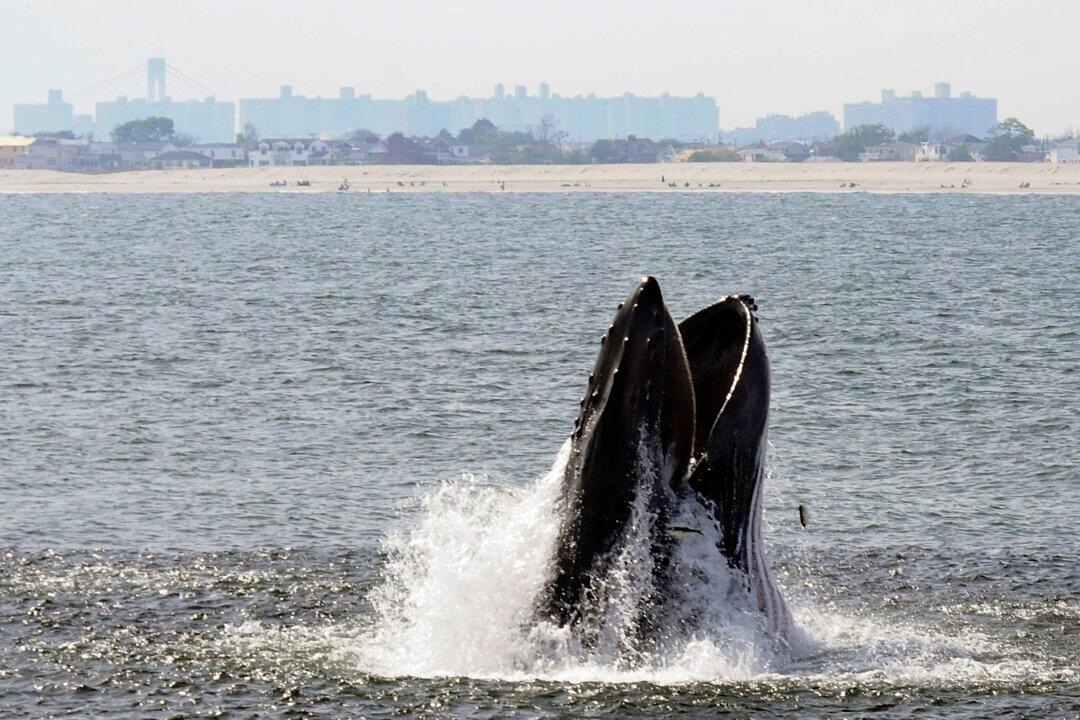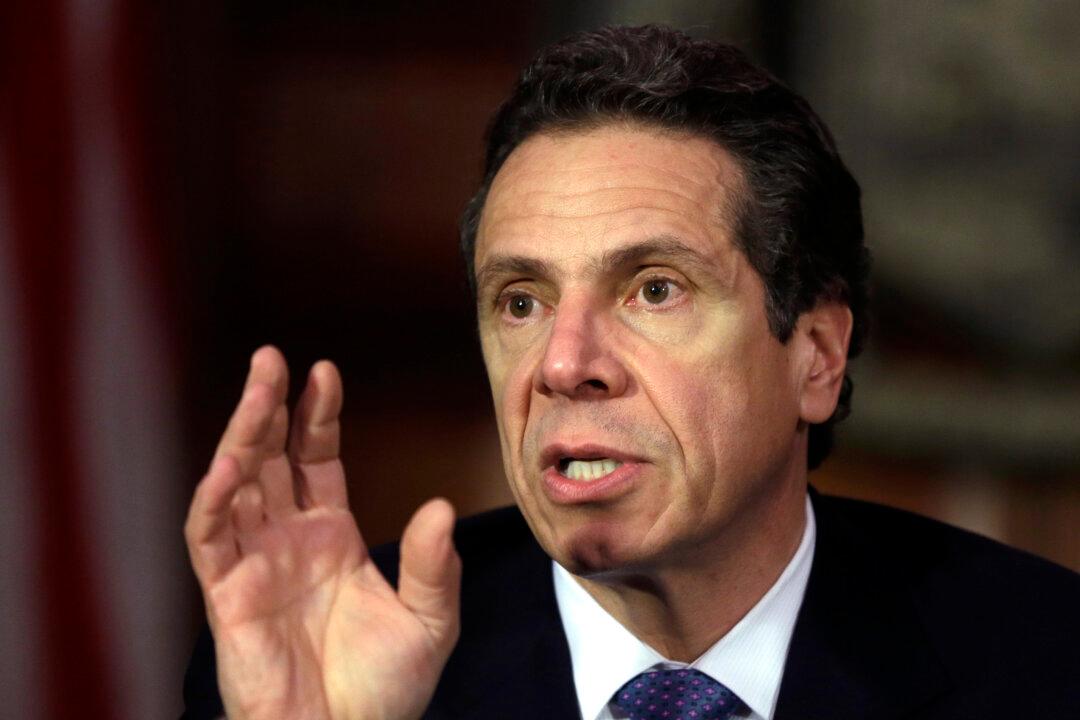NEW YORK—Maybe they want to sing on Broadway.
Humpback whales, the gigantic, endangered mammals known for their haunting underwater songs, have been approaching New York City in greater numbers than even old salts can remember.
Naturalists aboard whale-watching boats have seen humpbacks in the Atlantic Ocean within a mile of the Rockaway Peninsula, part of New York’s borough of Queens, within sight of Manhattan’s skyscrapers.
“It is truly remarkable, within miles of the Empire State Building, to have one of the largest and most charismatic species ever to be on this planet,” said Howard Rosenbaum, director of the Ocean Giants program at the Wildlife Conservation Society.
Humpbacks were spotted 87 times from the boats this year, and by cataloging the whales’ markings, at least 19 different humpbacks have been identified in the waters off the city.
Paul Sieswerda, founder of Gotham Whale, which documents the marine mammal population around New York, said reports of humpbacks in the New York Bight, where the city’s harbor meets the Atlantic, began to pick up around 2010 from surprised fishermen and other veterans on the water.
Gotham Whale then partnered with the American Princess whale-watching boat, providing naturalists who could document the sightings.
The naturalists also do an educational presentation on the boat and answer customers’ questions, said Tom Paladino, the boat’s captain.
“It was pretty slim pickings at first, actually,” Sieswerda said. “We went on many cruises and had three sightings totaling five whales in 2011.”
But in 2012, there were 15 sightings; in 2013, 33; and this year there were 87 sightings totaling 106 humpbacks.
Many whales were sighted more than once. But by comparing flukes—the distinctive shapes and markings of their tails—19 different humpbacks have been documented near the city so far. Customers on the whale-watching tours are asked to share any photos they get of such markings for the “New York City Humpback Whale Catalog.”
“This is the way they’ve been doing it in Maine and Massachusetts, the recognized way to keep track of these whales, study their behavior,” Sieswerda said.

A humpback whale breaks the surface in the waters through a school of fish six miles off the coast of New York City on Aug. 28, 2014. Naturalists aboard whale-watching boats have seen humpbacks in the Atlantic Ocean within a mile of the Rockaway peninsula, part of New York's borough of Queens. AP Photo/Wildlife Conservation Society, Julie Larsen Maher





